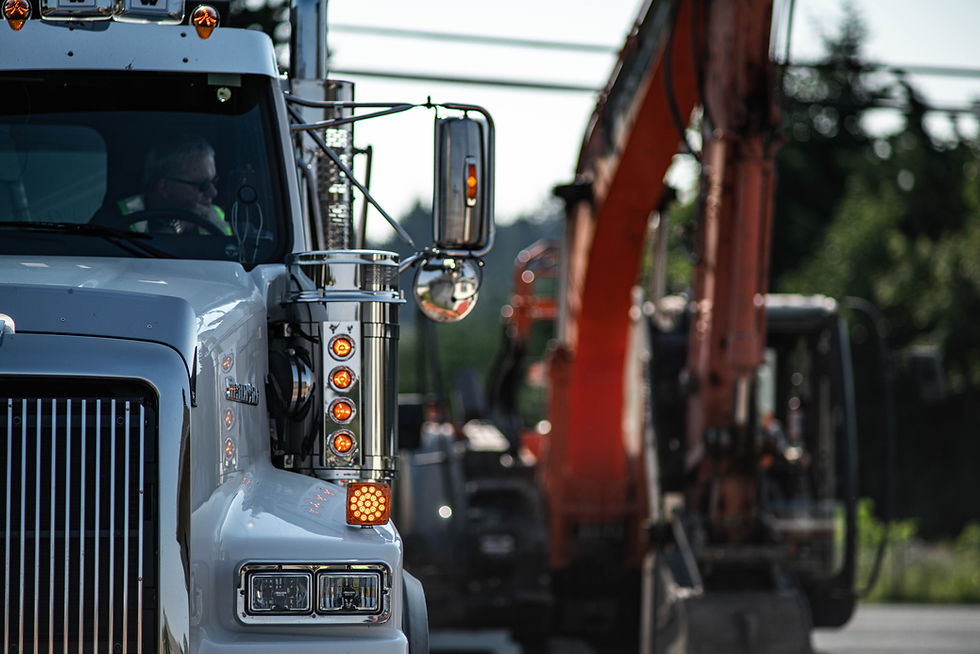Maximizing Stability: The Benefits of Core Landscape Gravel Grids for Steep Slopes
- Dallas Robertson

- Sep 3
- 4 min read
Steep slopes can be a challenge for landscaping and construction projects. The potential for erosion, instability, and maintenance issues can scare off even experienced landscapers. Fortunately, core landscape gravel grids offer a smart solution. In this post, we will explore how these grids can manage steep slopes effectively. We will look at their functionality, installation process, and long-term advantages that make them a great choice for various projects.
Understanding Core Landscape Gravel Grids
Core landscape gravel grids are innovative systems designed specifically to stabilize gravel surfaces. These grids feature a network of interconnected cells that keep gravel in place, preventing it from shifting or washing away. This is crucial for steep slopes, where traditional landscaping methods may not provide enough support.
The key function of these grids is to create a stable foundation for gravel. They allow for effective drainage while minimizing the risk of erosion. By holding the gravel within the grid structure, they help maintain slope integrity and provide a natural, appealing look.
Benefits of Using Core Landscape Gravel Grids
Enhanced Stability
A major benefit of core landscape gravel grids is their ability to enhance stability on steep slopes. For instance, studies show that using these grids can reduce gravel movement by up to 70% compared to conventional landscaping techniques. This stability is essential for preventing erosion and preserving the slope’s structure over time.
These grids also distribute weight more effectively. This feature is crucial in areas with heavy foot traffic or vehicle access. Property owners can expect to see a significant reduction in maintenance needs since the gravel stays in place better.
Improved Drainage
Effective drainage is vital in any landscaping project, particularly on steep slopes where water runoff can lead to serious erosion. Core landscape gravel grids excel in facilitating proper drainage. They allow water to flow through the gravel, keeping it contained within the grid.
This design minimizes water pooling that weakens slopes and contributes to erosion. With improved drainage, these grids help maintain a healthy landscape and prevent costly repairs. In fact, well-drained landscapes can experience up to 50% less soil erosion.
Eco-Friendly Solution
In today’s world, sustainability is important. Core landscape gravel grids provide an eco-friendly option for steep slopes. Using gravel as a primary material supports natural drainage and reduces reliance on chemical treatments common with traditional landscaping.
Moreover, many grids are made from recycled plastics, which enhance their environmental benefits. By opting for core landscape gravel grids, landscapers can create beautiful and functional spaces while embracing eco-conscious practices.
Versatile Applications
Core landscape gravel grids aren’t just for residential landscaping. They can be used in commercial settings, parks, and public spaces. Their versatility makes them a great choice for projects that need support on steep slopes.
These grids can serve various purposes—from creating walkways to establishing parking areas. With their ability to maintain landscape aesthetics, they open up creative design possibilities that blend functionality with visual appeal.
Installation Process
Preparing the Site
Before laying core landscape gravel grids, proper site preparation is crucial. Clear the area of debris, vegetation, and loose soil. Adequate preparation ensures that the grids are installed correctly and function as intended.
Laying the Grids
When the site is ready, the next step is to lay the gravel grids. Place the grids in a staggered pattern to ensure maximum stability. Following the manufacturer’s guidelines will help achieve the best results.
After placing the grids, fill them with gravel, ensuring that all cells are adequately filled for proper support. Compacting the gravel will further enhance stability and prevent shifting.
Finishing Touches
Once the grids are installed and filled, add finishing touches to the landscape. Planting vegetation around the edges of grids or incorporating decorative elements can improve the overall look. Remember to perform regular maintenance checks for shifting gravel or signs of erosion to ensure the longevity of your installation.
Long-Term Advantages
Cost-Effectiveness
The initial cost of core landscape gravel grids may be higher than traditional methods. However, the long-term benefits often make up for this. The durability and stability provided by these grids can reduce the need for frequent repairs. Recent studies indicate that property owners can save up to 30% on maintenance costs over the lifespan of the project.
Aesthetic Appeal
Beyond practicality, core landscape gravel grids enhance the visual quality of steep slopes. They create clean, organized gravel surfaces that contribute to a polished landscape. This aesthetic advantage can increase property value and improve enjoyment of outdoor spaces.
Increased Safety
Stability on steep slopes is about more than looks; it’s vital for safety. Core landscape gravel grids help prevent erosion and maintain a solid surface, making environments safer for pedestrians and vehicles. This safety factor is particularly critical in public spaces and commercial properties.
Final Thoughts
Core landscape gravel grids can transform how we manage steep slopes in landscaping. Their benefits include enhanced stability, improved drainage, eco-friendly properties, and versatile applications. By investing in these grids, property owners and landscapers can create beautiful, functional spaces that endure over time.
As we strive for more sustainable and reliable landscaping solutions, core landscape gravel grids will play a key role in the evolution of landscape design.







Comments